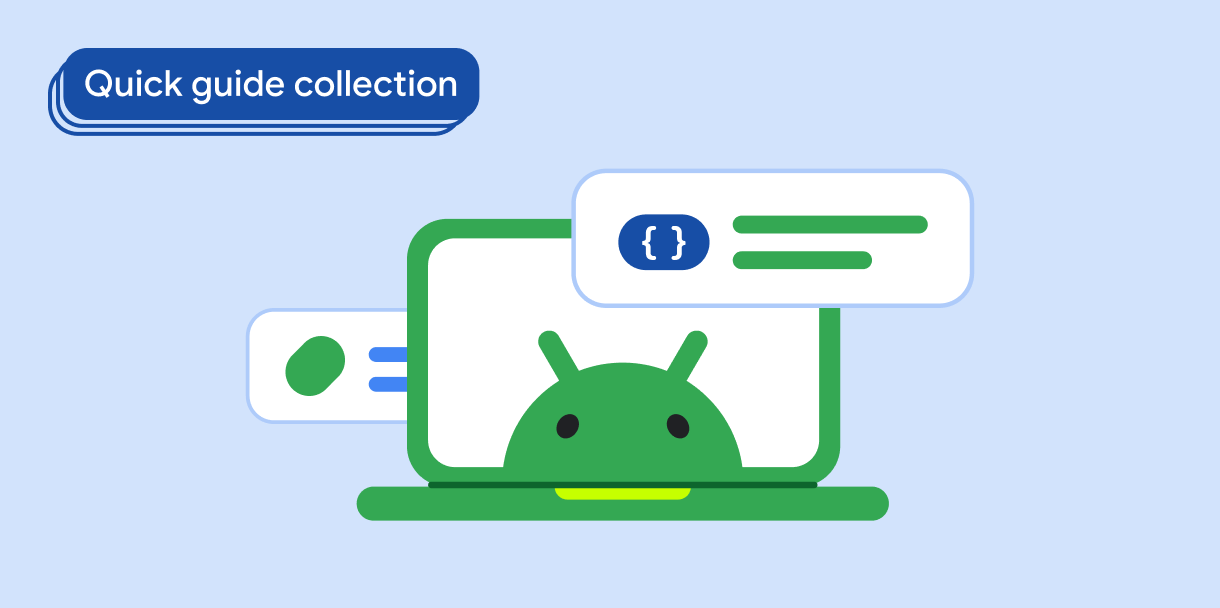您的应用在手机的纵向模式下运行良好,因此您已将应用限制为仅纵向。但您看到有机会在大屏幕设备的横向模式下实现更多功能。
如何做到两全其美——在小屏幕上将应用限制为纵向,但在大屏幕上启用横向?
本指南是一项临时措施,直到您可以改进您的应用以完全支持所有设备配置为止。
管理应用方向
若要在大屏幕上启用横向模式,请将您的应用清单设置为默认处理方向更改。在运行时,确定应用窗口大小。如果应用窗口较小,则通过替换清单方向设置来限制应用的方向。
1. 在应用清单中指定方向设置
您可以避免声明应用清单的 screenOrientation 元素(在这种情况下,方向默认为 unspecified),也可以将屏幕方向设置为 fullUser。如果用户未锁定基于传感器的旋转,您的应用将支持所有设备方向。
<activity
android:name=".MyActivity"
android:screenOrientation="fullUser">
unspecified 和 fullUser 之间的区别很细微但很重要。如果您不声明 screenOrientation 值,系统会选择方向,并且系统用于定义方向的策略可能因设备而异。另一方面,指定 fullUser 更符合用户为设备定义的行为:如果用户锁定基于传感器的旋转,应用将遵循用户偏好设置;否则,系统允许四种可能的屏幕方向中的任意一种(纵向、横向、反向纵向或反向横向)。请参阅 screenOrientation。
2. 确定屏幕尺寸
清单设置支持所有用户允许的方向后,您可以根据屏幕尺寸通过编程方式指定应用方向。
将 Jetpack WindowManager 库添加到模块的 build.gradle 或 build.gradle.kts 文件中
Kotlin
implementation("androidx.window:window:version") implementation("androidx.window:window-core:version")
Groovy
implementation 'androidx.window:window:version' implementation 'androidx.window:window-core:version'
使用 Jetpack WindowManager WindowMetricsCalculator#computeMaximumWindowMetrics() 方法将设备屏幕尺寸作为 WindowMetrics 对象获取。可以将窗口指标与窗口尺寸类进行比较,以确定何时限制方向。
窗口尺寸类提供了小屏幕和大屏幕之间的断点。
使用 WindowWidthSizeClass#COMPACT 和 WindowHeightSizeClass#COMPACT 断点来确定屏幕尺寸
Kotlin
/** Determines whether the device has a compact screen. **/ fun compactScreen() : Boolean { val metrics = WindowMetricsCalculator.getOrCreate().computeMaximumWindowMetrics(this) val width = metrics.bounds.width() val height = metrics.bounds.height() val density = resources.displayMetrics.density val windowSizeClass = WindowSizeClass.compute(width/density, height/density) return windowSizeClass.windowWidthSizeClass == WindowWidthSizeClass.COMPACT || windowSizeClass.windowHeightSizeClass == WindowHeightSizeClass.COMPACT }
Java
/** Determines whether the device has a compact screen. **/ private boolean compactScreen() { WindowMetrics metrics = WindowMetricsCalculator.getOrCreate().computeMaximumWindowMetrics(this); int width = metrics.getBounds().width(); int height = metrics.getBounds().height(); float density = getResources().getDisplayMetrics().density; WindowSizeClass windowSizeClass = WindowSizeClass.compute(width/density, height/density); return windowSizeClass.getWindowWidthSizeClass() == WindowWidthSizeClass.COMPACT || windowSizeClass.getWindowHeightSizeClass() == WindowHeightSizeClass.COMPACT; }
- 注意
- 示例是作为 activity 的方法实现的;因此,activity 在
computeMaximumWindowMetrics()的参数中被解引用为this。 - 之所以使用
computeMaximumWindowMetrics()方法而不是computeCurrentWindowMetrics(),是因为应用可以在多窗口模式下启动,在这种模式下会忽略屏幕方向设置。只有当应用窗口是整个设备屏幕时,确定应用窗口大小并替换方向设置才有意义。
有关如何声明依赖项以在您的应用中提供 computeMaximumWindowMetrics() 方法的说明,请参阅 WindowManager。
3. 替换应用清单设置
确定设备屏幕尺寸紧凑后,您可以调用 Activity#setRequestedOrientation() 来替换清单的 screenOrientation 设置
Kotlin
override fun onCreate(savedInstanceState: Bundle?) { super.onCreate(savedInstanceState) requestedOrientation = if (compactScreen()) ActivityInfo.SCREEN_ORIENTATION_PORTRAIT else ActivityInfo.SCREEN_ORIENTATION_FULL_USER ... // Replace with a known container that you can safely add a // view to where the view won't affect the layout and the view // won't be replaced. val container: ViewGroup = binding.container // Add a utility view to the container to hook into // View.onConfigurationChanged. This is required for all // activities, even those that don't handle configuration // changes. You can't use Activity.onConfigurationChanged, // since there are situations where that won't be called when // the configuration changes. View.onConfigurationChanged is // called in those scenarios. container.addView(object : View(this) { override fun onConfigurationChanged(newConfig: Configuration?) { super.onConfigurationChanged(newConfig) requestedOrientation = if (compactScreen()) ActivityInfo.SCREEN_ORIENTATION_PORTRAIT else ActivityInfo.SCREEN_ORIENTATION_FULL_USER } }) }
Java
@Override protected void onCreate(Bundle savedInstance) { super.onCreate(savedInstanceState); if (compactScreen()) { setRequestedOrientation(ActivityInfo.SCREEN_ORIENTATION_PORTRAIT); } else { setRequestedOrientation(ActivityInfo.SCREEN_ORIENTATION_FULL_USER); } ... // Replace with a known container that you can safely add a // view to where the view won't affect the layout and the view // won't be replaced. ViewGroup container = binding.container; // Add a utility view to the container to hook into // View.onConfigurationChanged. This is required for all // activities, even those that don't handle configuration // changes. You can't use Activity.onConfigurationChanged, // since there are situations where that won't be called when // the configuration changes. View.onConfigurationChanged is // called in those scenarios. container.addView(new View(this) { @Override protected void onConfigurationChanged(Configuration newConfig) { super.onConfigurationChanged(newConfig); if (compactScreen()) { setRequestedOrientation(ActivityInfo.SCREEN_ORIENTATION_PORTRAIT); } else { setRequestedOrientation(ActivityInfo.SCREEN_ORIENTATION_FULL_USER); } } }); }
通过将逻辑添加到 onCreate() 和 View.onConfigurationChanged() 方法中,您能够在 activity 调整大小或在显示屏之间移动时(例如设备旋转后或折叠设备折叠或展开时)获取最大窗口指标并替换方向设置。如需详细了解配置更改何时发生以及何时导致 activity 重建,请参阅处理配置更改。
要点
screenOrientation:应用清单设置,用于指定您的应用如何响应设备方向更改- Jetpack WindowManager:一组库,用于确定应用窗口的大小和宽高比;向后兼容到 API 级别 14
Activity#setRequestedOrientation():您可以在运行时更改应用方向的方法
结果
现在,您的应用应该在小屏幕上保持纵向,无论设备如何旋转。在大屏幕上,应用应该支持横向和纵向。
包含本指南的集合
本指南是这些精选的快速指南集合的一部分,这些集合涵盖了更广泛的 Android 开发目标



